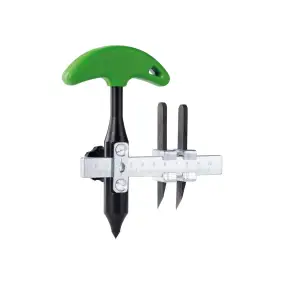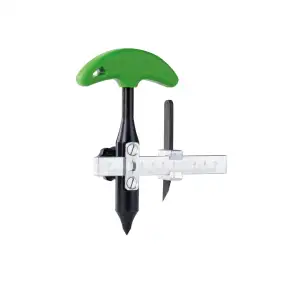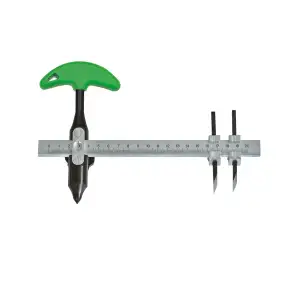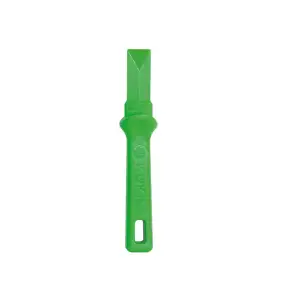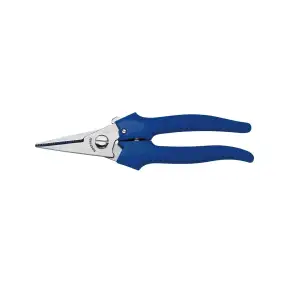Tools
Kukko 322-200 Gasket Cutter
Kukko 2200-2 Plastic Gasket Scraper
Kukko 321-200 Gasket Cutter
Kukko 322-400 Gasket Cutter
Kukko 2200-1 Plastic Gasket Scraper
Kukko 993-190 Universal Combination Scissors
Gasket Cutter for Flange Gaskets
One of the most commonly used tools for making precise round gaskets is the gasket cutter. This tool is essential for cutting flange gaskets, which are often used in piping systems and engine parts. Brands like Kukko offer high-quality gasket cutters known for their precision and reliability.
Advantages of a Gasket Cutter
A gasket cutter allows you to cut round gaskets with a highly accurate diameter. This is especially important in industrial applications where the seals must fit exactly to prevent leaks. Gasket cutters are versatile and can be used to create gaskets with diameters ranging from 40 mm to 800 mm, depending on the model. This makes the tool suitable for a wide range of applications, from small engine parts to large industrial flanges.
Using a Gasket Cutter
Using a gasket cutter requires some preparation and care to ensure the gasket is cut accurately. The first step is measuring the diameter of the gasket you want to create. This is crucial, as the correct size is essential for a proper seal. After determining the desired diameter, you adjust the gasket cutter to the correct radius. This is easy to do thanks to the scale on the cutter, which ensures you can position the cut precisely.
For gasket cutters with two blades, you set the inner blade to the radius of the inner edge of the gasket, and the outer blade to the outer edge. This allows you to cut both the inner and outer diameters of the gasket in one operation. If you are using a gasket cutter with only one blade, it is important to cut the outer diameter of the gasket first. If you cut the inner diameter first, you lose the center point, which can affect the accuracy of the cut.
Making a Gasket with a Hole Punch
Hole punches are another essential tool for making gaskets, especially when you need to create bolt holes in a flange gasket. Hole punches are simple to use: you place the correct size punch on the material and strike the back of the punch with a hammer. This pierces the material and creates a perfect circle. This process is especially useful for making bolt holes in flange gaskets.
Advantages and Disadvantages of Hole Punches
One of the biggest advantages of hole punches is the simplicity and precision with which you can make small, round cutouts. They are available in various sizes, allowing you to choose the right tool for each diameter. However, the biggest drawback of hole punches is that you need a separate punch for each specific size. This can be impractical if you need different diameters, especially if you are dealing with both metric and imperial sizes. Having a comprehensive set of hole punches can therefore be an investment, but it offers the flexibility to make precise holes in different sizes and materials.
Cutting Gasket Paper and Gasket Sheet
For making gaskets from thin gasket paper, such as Victor Reinz REINZOLOID FS53, a pair of scissors or a knife is often sufficient. These materials are relatively easy to cut, making them suitable for DIY projects or for use in less demanding applications. However, when working with thicker gasket sheets, such as AFM34 or KLINGERSil C-4400, cutting becomes more challenging.
Using Scissors and Knives
When cutting thicker gasket sheets, it is important to use the right scissors or knife. A good pair of scissors for thicker materials has a sharp cutting edge and is sturdy enough to cut through the material without distorting it. When cutting, also pay attention to the direction of the scissors, as this can affect the accuracy of the cut. A knife can be useful for cutting straight lines in gasket sheet, but it requires a steady hand and a solid surface to cut on.
Other Tools for Making Gaskets
In addition to cutting tools, measuring and marking tools are also essential for making accurate gaskets. The accuracy of your gasket largely depends on how well you can measure and mark the dimensions. A good metal ruler is indispensable for measuring straight lines, while a square and a protractor are useful for drawing angles and circles. These tools are especially important when marking bolt holes or drawing the contours of a flange gasket.
Tips for Using Measuring and Marking Tools
- Metal Ruler: Use a metal ruler for measuring and drawing straight lines. A metal ruler provides more stability than a plastic ruler, which is important for accurate markings.
- Square: A square is useful for drawing right angles and checking the angles of your gasket.
- Protractor: A protractor can be used to accurately draw circles and angles, which is especially useful when marking bolt holes in flange gaskets.
Conclusion
Making custom gaskets requires a combination of the right tools and techniques. Whether you are working with thin gasket paper or thick gasket sheets, using gasket cutters, hole punches, and other cutting tools can significantly simplify and improve the process. Using precise measuring and marking tools is also crucial to ensure that your gaskets fit perfectly and seal effectively.
By investing in high-quality tools and paying attention to the details of the cutting and measuring process, you can create professional and accurate gaskets that meet the requirements of your project. Whether you are an experienced professional or a DIY enthusiast, with the right tools, you are well-equipped to make any sealing task a success.


